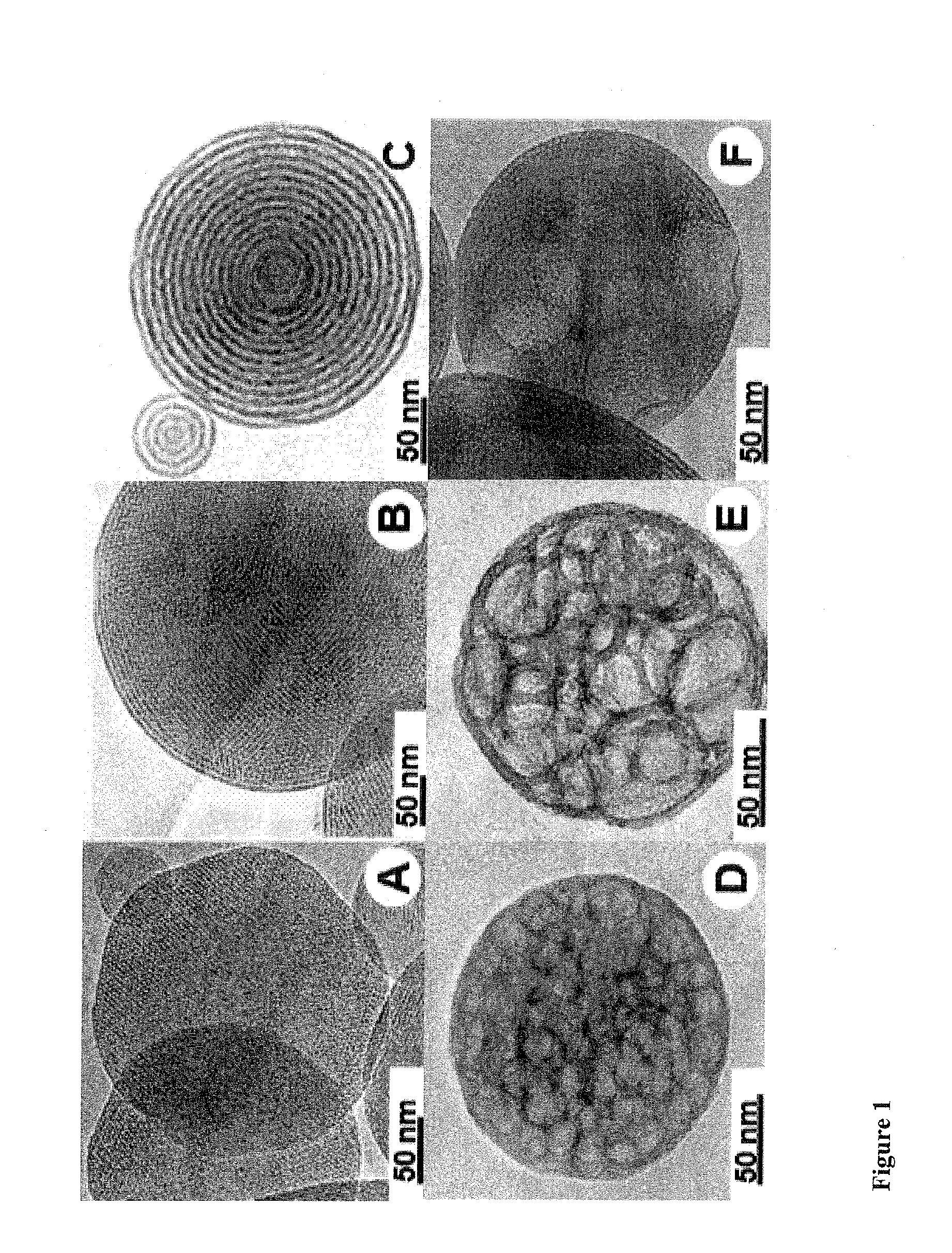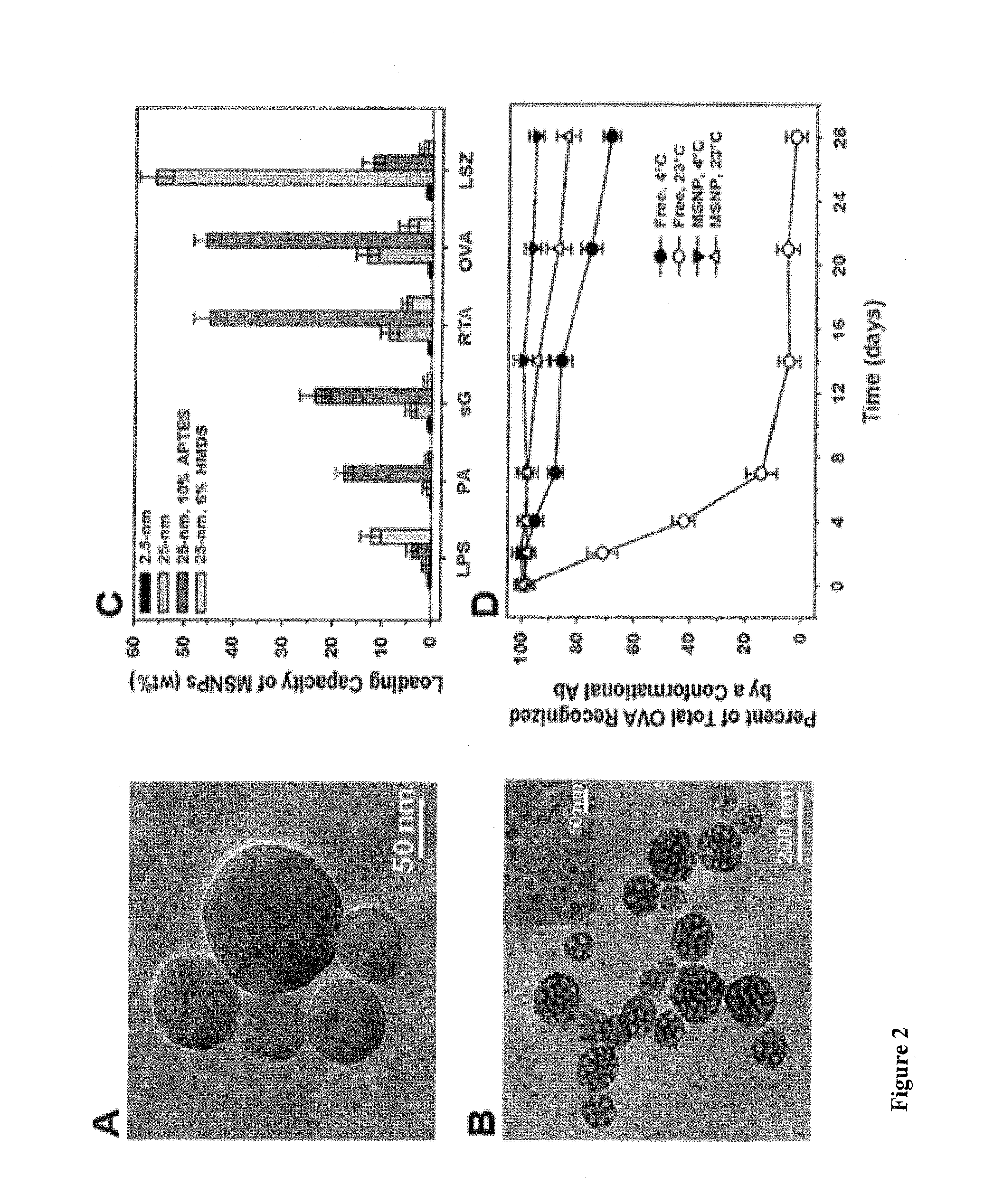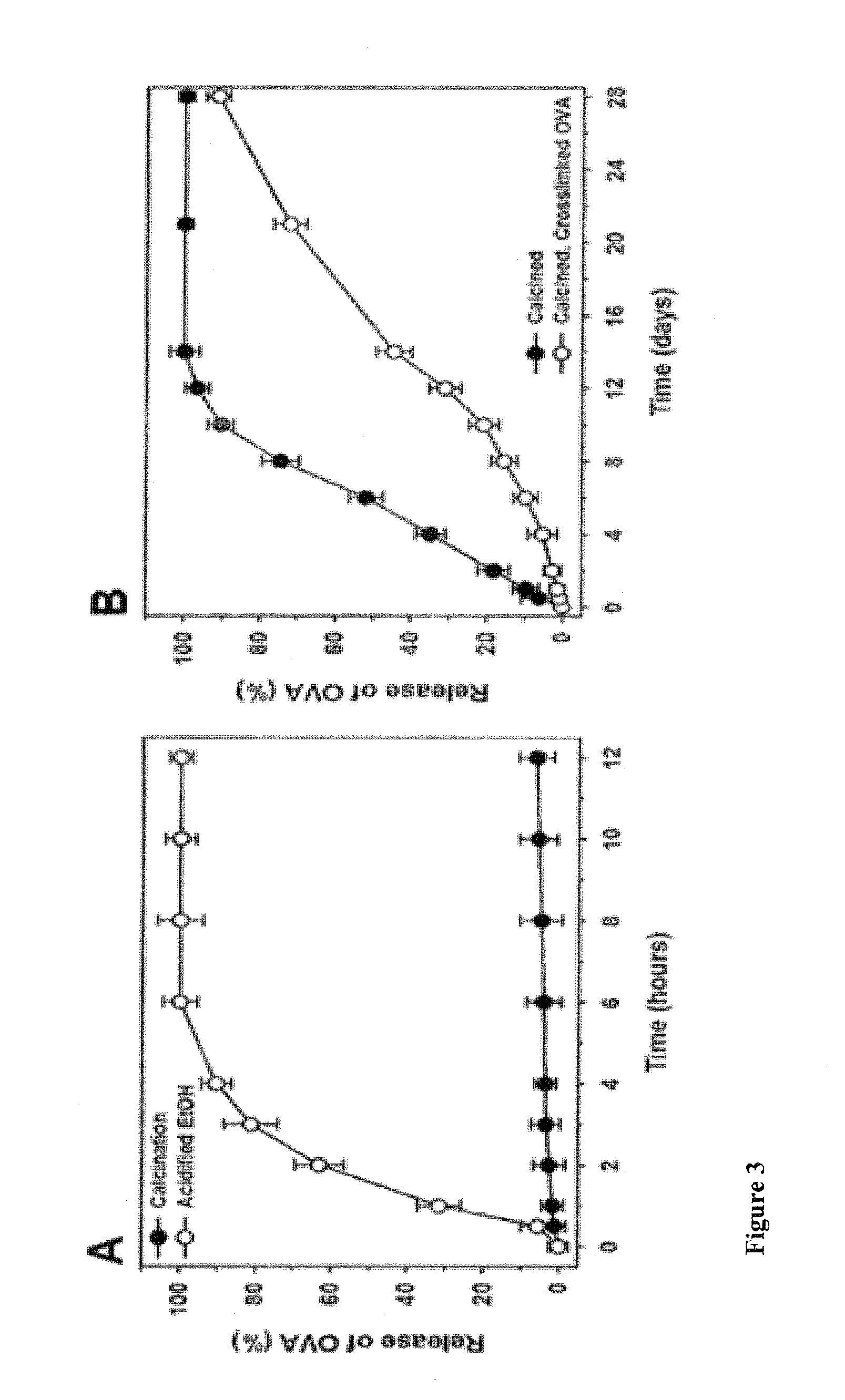Mesoporous alum nanoparticles as a universal platform for antigen adsorption, presentation, and delivery
a technology of alum nanoparticles and nanoparticles, applied in the field ofmesoporous nanoparticles, can solve the problems of increasing the risk of vaccine allergy or anaphylaxis, ineffectiveness of some antigens, and several limitations of aluminum salt adjuvants, and achieve the effect of promoting effective uptak
- Summary
- Abstract
- Description
- Claims
- Application Information
AI Technical Summary
Benefits of technology
Problems solved by technology
Method used
Image
Examples
example 1
Mesoporous Nanoparticles with Reproducible Properties can be Synthesized in a Scalable Fashion Via Aerosol-Assisted Evaporation-Induced Self-Assembly
[0145]Aerosol-assisted evaporation-induced self-assembly (EISA)6 is a robust, scalable process that we pioneered over a decade ago to synthesize spherical, well-ordered oxide nano- and microparticles with a variety of pore sizes and geometries (see FIG. 1).
[0146]Panels (A) (B) of FIG. 1 show electron microscopy images of MSNPs with 2.5-nm pores (A) or 25-nm pores (B). The inset in (B) demonstrates that pores are surface-accessible. (C) The loading capacities of MSNPs with 2.5-nm or 25-nm pores for E. coli O157:H7 lipopolysaccharide (LPS), anthrax protective antigen (PA), soluble Nipah virus glycoprotein (sG), ricin toxin A-chain (RTA), ovalbumin (OVA), and lysozyme (LSZ). MSNPs were modified with (3-aminopropyl)triethoxysilane (APTES) to make pores positively-charged and with hexamethyldisilazane (HMDS) to make pores more hydrophobic. C...
example 2
Optimization of Pore Size and Chemistry Enables High Capacity Loading and Long-Term Stabilization of Disparate Protein Antigens, while Optimization of Framework Condensation Results in Tailorable Release Rates
[0149]Simple liposomes have a limited capacity for proteins >30 kDa and release encapsulated proteins within 12 to 72 hours, even when stabilized with polyethylene glycol (PEG) and cholesterol.7 Preparation of multilamellar vesicles (MLVs) using a dehydration-rehydration method for aqueous entrapment of macromolecules can increase encapsulation efficiency by as much as 50% but only minimally prolongs the duration of protein release.8 Polymeric nanoparticles, such as those composed of poly(lactic-co-glycolic acid) (PLGA) and prepared using a double-emulsion solvent-evaporation technique, have a 2 to 5-fold lower capacity for relatively small (9 Despite these recent improvements, state-of-the-art MLVs and polymeric nanoparticles still suffer from several limitations, including co...
example 3
Modification of the Supported Lipid Bilayer with Various Targeting Ligands Promotes Efficient Uptake by Antigen-Presenting Cells
[0154]A number of factors govern uptake and processing of nanoparticles by APCs, including their size, shape, surface charge, and degree of hydrophobicity. 1, 13, 14 Furthermore, a variety of molecules have been employed to target nanoparticles to APCs, including those that bind to CD205 (a.k.a. DEC-205), the mannose receptor (a.k.a. CD206), CD11b / CD18 (a.k.a. CR3), Fcγ receptors, and various TLRs.1 14, 15 To promote uptake by APCs, we encapsulated cargo-loaded MSNPs within SLBs composed of 1,2-dioleoyl-sn-glycerol-3-phosphocholine (DOPC), which we further modified with human IgG, human complement (C3), mannosylated cholesterol,16 or the TLR-4 agonist, monophosphoryl lipid A (MPLA).
[0155]FIG. 4 illustrates the encapsulation of OVA-loaded MSNPs in a SLB that is further modified with targeting ligands enables efficient uptake by dendritic cells and macrophage...
PUM
| Property | Measurement | Unit |
|---|---|---|
| Fraction | aaaaa | aaaaa |
| Fraction | aaaaa | aaaaa |
| Percent by mass | aaaaa | aaaaa |
Abstract
Description
Claims
Application Information
 Login to View More
Login to View More - R&D
- Intellectual Property
- Life Sciences
- Materials
- Tech Scout
- Unparalleled Data Quality
- Higher Quality Content
- 60% Fewer Hallucinations
Browse by: Latest US Patents, China's latest patents, Technical Efficacy Thesaurus, Application Domain, Technology Topic, Popular Technical Reports.
© 2025 PatSnap. All rights reserved.Legal|Privacy policy|Modern Slavery Act Transparency Statement|Sitemap|About US| Contact US: help@patsnap.com



